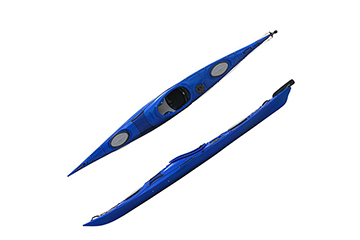Safety Precautions For Kayaking
Safety Precautions For Kayaking
Whenever you come out of the water, it is important to bring the necessary equipment and clothing. Other safety precautions should be taken during non-guided tours:
Bring a paddling buddy. When there is no guide, you should always go with another rower who can ask for help or offer it.
Reach an agreement on solidarity. A partner who walks in insight or by the ear won't help much.
Know your distance limit. If you are not trained in first aid, do not paddle farther from shore than you would in an easy swimming area. (Offshore is more interesting, anyway.)
Do hazard research. Ask knowledgeable local rowers for places to avoid as well as current, tide, and weather forecasts.
Know your water temperature. You should always be dressed to maintain the hull size (at least), which means that some kind of wetsuit should be worn when the water temperature does not exceed 60 F.
Check your PFD. Make sure it sticks tightly and loosely enough so that it doesn't interfere with your breathing. If the temperature rises and you need to remove a layer, paddle first to support the shore. Do not remove the PFD from the water.
Be careful when using spray skirts. Do not wear them unless you know how to pop them correctly and get them wet.
Don't forget your whistle. The universal distress signal is a three-tone long shock wave.
If you plan to go kayaking in the future, consider taking a rescue course. Lessons covering navigation, tides, currents, and surfing can help you avoid trouble in the first place.
Kayaking skills for the first time
Planning your first non-guided outing? Make it easy for yourself:
Choose a small, calm water area. Lakes or ponds with little or no motorboat traffic are ideal.
Find a gently sloping beach to launch. The steep, muddy, and rocky coastline will be more challenging.
The weather was clear and still. You will have fewer complications and a higher level of comfort.
If there is a breeze, paddle into it first. Encountering difficulties on the way back is a struggle; Rowing in the wind is a piece of cake.
Plan outings, not adventures. For optimal fatigue, your paddle time should be kept under two hours.
How do you hold a kayak paddle?
First, grab the paddle with both hands and center the paddle shaft on top of your head. When your elbows are bent 90 degrees, your hands will be in the correct starting position.
Now lower the paddleboard and adjust it in the following direction to hold it properly:
Make sure the blades are aligned with each other. If you find that the blades are offset from each other, the blades may "feather". In this case, take a minute to adjust the blade back to its original position through the button or the twist setting in the center of the shaft. (Feathery leaves penetrate the wind better, but are harder for beginners.)
Look at each blade and make sure the long edge of each blade is at the top. This is the right position to help your blade move smoothly and efficiently through the water. (If you have a uniform blade shape, either side can be up.

Make sure the blade is shoveled out sideways toward you: the blade curvature is subtle, so watch carefully.
Place the large knuckles on top of the paddle shaft so that they are aligned with the top of the blade.
Relax your grip. Make an "O" with your thumb and index finger, then place the other fingers lightly on the axis. There is no need to hold the pick and it will fatigue the hands more quickly.










